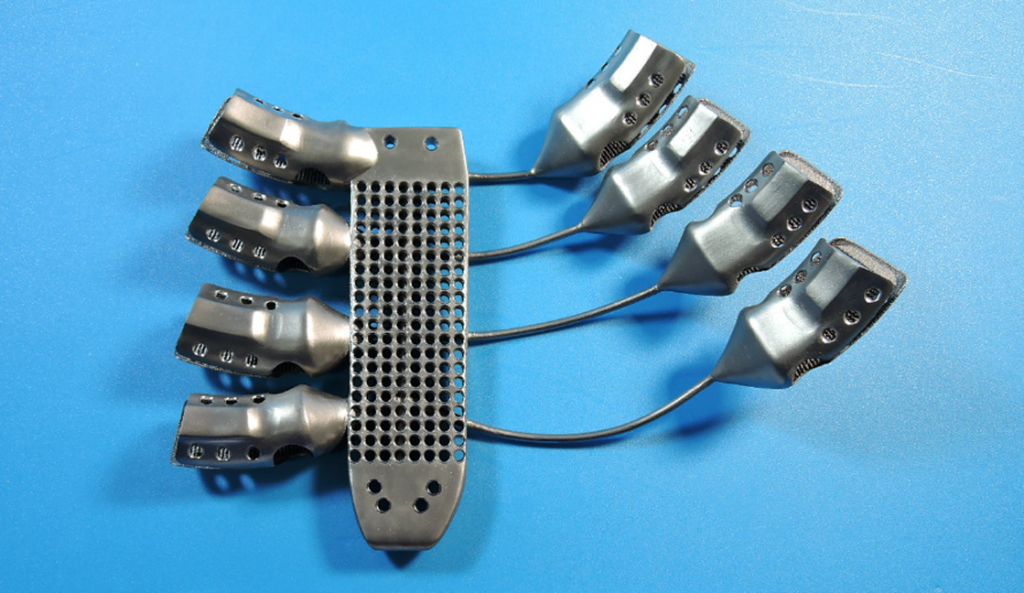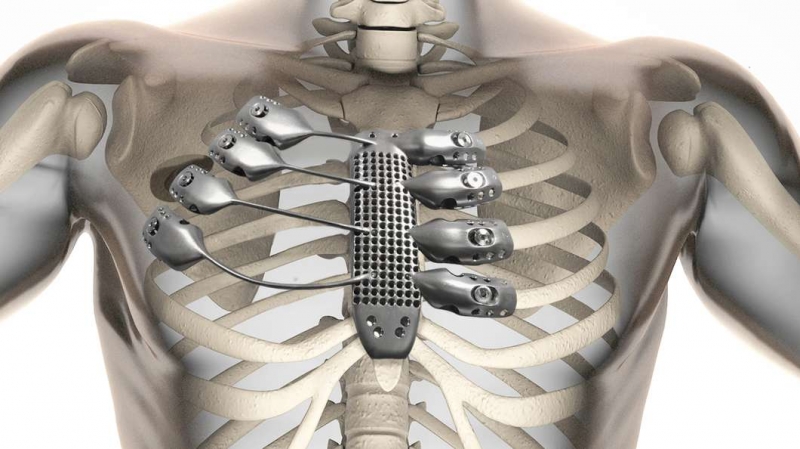Only months after Australia’s scientific research arm launched its $6 million 3D printing facility, CSIRO‘s Lab 22 has already begun making a significant impact, helping to improve the life of one Spanish cancer patient. With a 3D printed titanium sternum and rib implant, designed and manufactured by Lab 22 and Melbourne-based Anatomics, an international collaboration has aided a 54-year-old patient diagnosed with a chest wall sarcoma.
When a Spanish surgical team – made up of Dr José Aranda, Dr Marcelo Jimene and Dr Gonzalo Varela from Salamanca University Hospital – decided to remove the patient’s sternum and part of his rib cage, the team knew that the geometries of his chest cavity would prove finding a suitable implant difficult. Dr Aranda explains, “We thought, maybe we could create a new type of implant that we could fully customise to replicate the intricate structures of the sternum and ribs. We wanted to provide a safer option for our patient, and improve their recovery post-surgery.” However, 3D printing has been increasingly proven as the ideal method for creating complex, patient-specific implants. In turn, they crossed paths with Aussie medical device company Anatomics.
Anatomics CEO Andrew Batty realized that the only process for producing such an implant was through metal 3D printing, saying, “We wanted to 3D print the implant from titanium because of its complex geometry and design. While titanium implants have previously been used in chest surgery, designs have not considered the issues surrounding long term fixation. Flat and plate implants rely on screws for rigid fixation that may come loose over time. This can increase the risk of complications and the possibility of reoperation.”
First, Anatomics produced a 3D reconstruction of the patient’s chest wall and tumor with high-resolution CT scans, with which the doctors were better able to plan their surgery and the necessary implant. Batty elaborates, “From this, we were able to design an implant with a rigid sternal core and semi-flexible titanium rods to act as prosthetic ribs attached to the sternum.” To print the resulting component, the team turned to CSIRO’s newly launched facility, which houses a variety of metal 3D printers and other additive technologies.
Alex Kingsbury, Research Group Leader of Additive Manufacturing at CSIRO, explained the benefits of 3D printing in surgical-grade titanium, “We built the implant using our $1.3 million Arcam printer. The printer works by directing an electron beam at a bed of titanium powder in order to melt it. This process is then repeated, building the product up layer-by-layer until you have a complete implant. 3D printing has significant advantages over traditional manufacturing methods, particularly for biomedical applications. As well as being customisable, it also allows for rapid prototyping – which can make a big difference if a patient is waiting for surgery.”
The implant was then shipped off to Spain, where it was implanted into the patient. Dr. Aranda says, “The operation was very successful. Thanks to 3D printing technology and a unique resection template, we were able to create a body part that was fully customised and fitted like a glove.”
The news was heralded as a feat of remarkable international collaboration today by Australian Minister for Industry and Science Ian Macfarlane. “This breakthrough is an impressive example of what can be achieved when industry and science come together,” Minister Macfarlane said. “This collaboration crossed disciplines and international boundaries, with a clear benefit for both this individual patient and for surgical practice. Collaboration is the key to boosting Australia’s innovation performance. Initiatives like our Industry Growth Centres will foster these links and relationships which are critical to future successes like this.”






